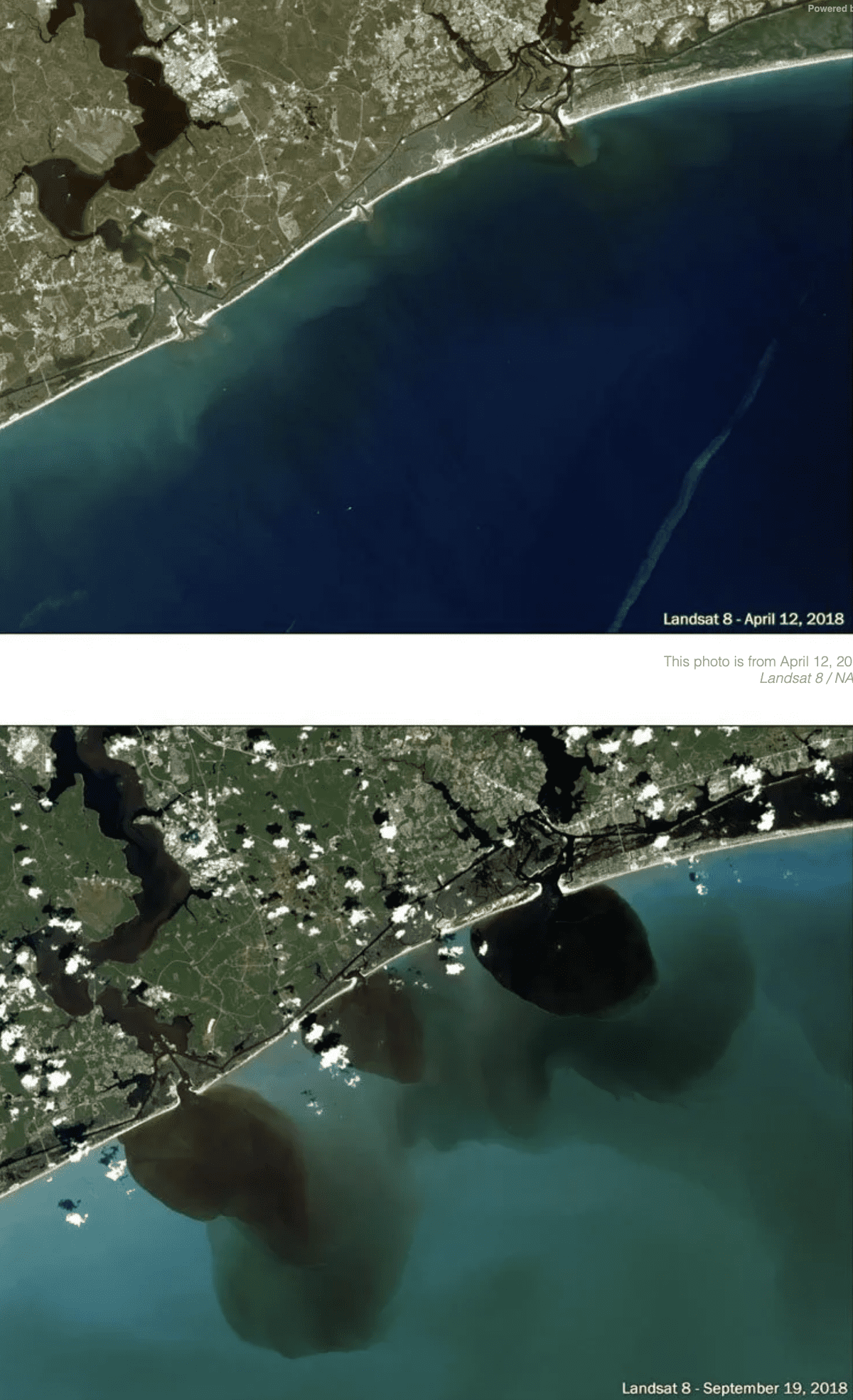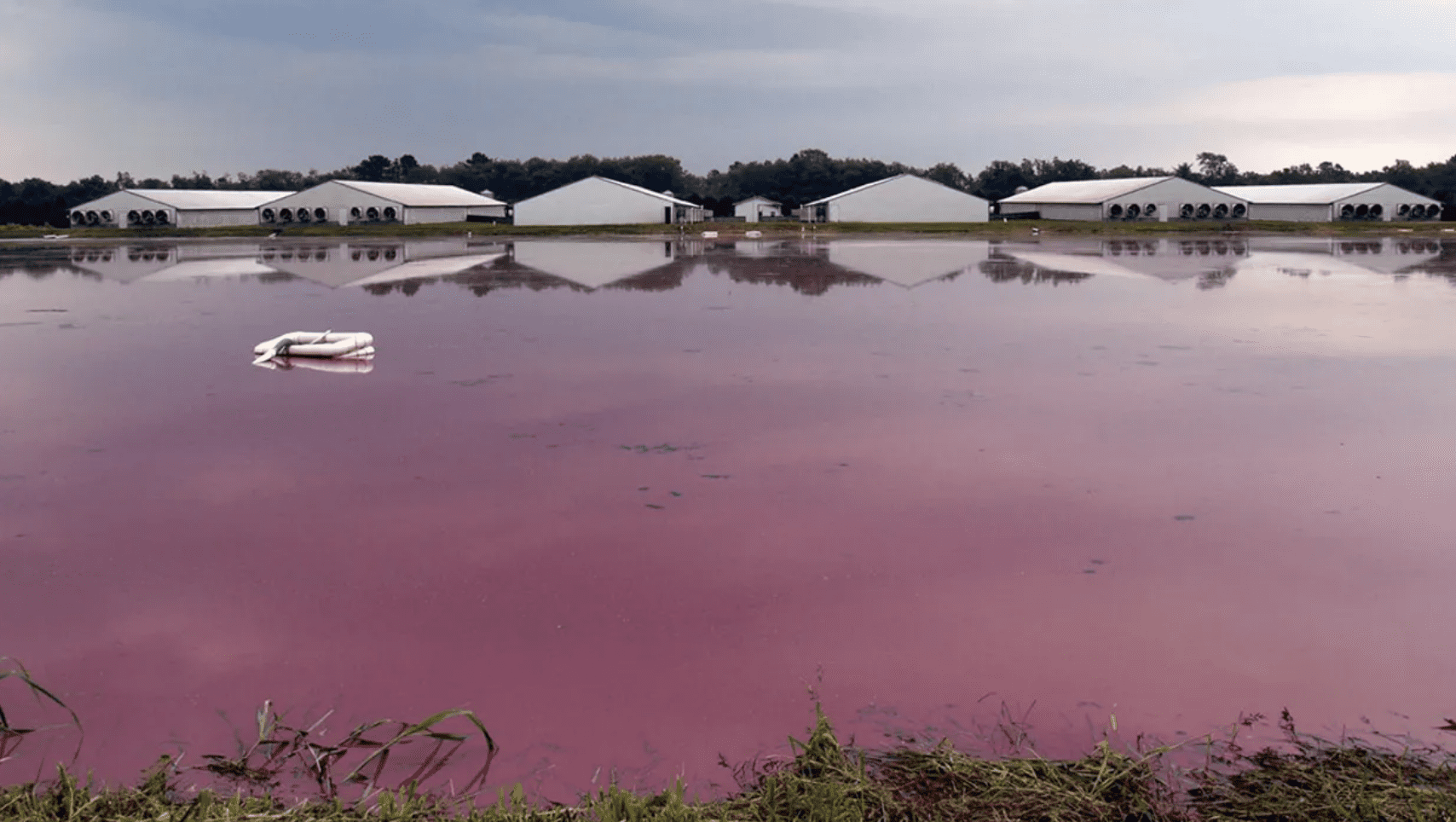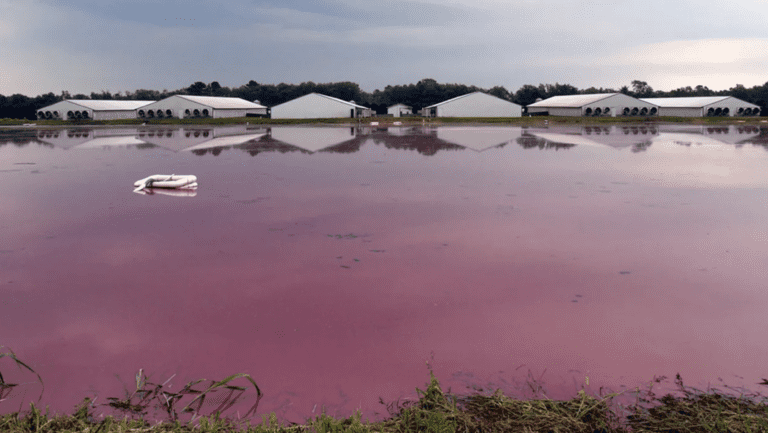CAFOs often store animal waste in massive, open-air lagoons, like this one at Vanguard Farms in Chocowinity, North Carolina. Bacteria feeding on the animal waste turns the mixture a bright pink. picstever / Flickr / CC BY-ND 2.0
It has been almost a year since Hurricane Florence slammed the Carolinas, dumping a record 30 inches of rainfall in some parts of the states. At least 52 people died, and property and economic losses reached $24 billion, with nearly $17 billion in North Carolina alone. Flood waters also killed an estimated 3.5 million chickens and 5,500 hogs.
A lesser-known impact of the devastating hurricane was revealed through satellite photos released after the storm. Excessive rainfall flooded concentrated animal feeding operations (CAFOs) in low-lying areas, carrying riverbed sediment and animal waste previously stored in open-air lagoons into nearby waterways and then into the Atlantic. The difference between the photos, taken just five months apart before and after the storm, is striking.
Here are before-and-after photos of the coastline near Marine Corps Base Camp Lejeune on April 12, 2018, and then on Sept. 19, 2018, after Hurricane Florence dumped near-record amounts of rainfall.

This photo is from April 12, 2018. Sept. 19, 2018: The dark brown liquid spilling into the Atlantic captured in this image is a mix of rainwater, riverbed sediment and waste from those factory farms within the 100-year flood plain that were inundated with more than 20 inches of rain in the matter of a couple of days.
Landsat 8 / NASA
Generally, CAFOs dispose of animal waste by spraying it as fertilizer and storing the excess in massive underground pits or open-air lagoons, where sulfur-eating bacteria often turn the mixture bright pink. Given that cropland can absorb only so much, a good deal of the waste ends up in groundwater, rivers, streams and the ocean. In fact, agriculture is the leading cause of pollution in the nation’s rivers and lakes, according to the U.S. Environmental Protection Agency (EPA), much of it emanating from large-scale factory farms.
Floods can have even more devastating consequences for water quality. The risk is particularly pressing for North Carolina, a state regularly smacked by hurricanes, because it houses more than 2,200 hog CAFOs and 3,900 poultry CAFOs, and produces up to 10 billion gallons of animal waste a year. These estimates come from the Environmental Working Group (EWG).
One problem is that they are just that — estimates.
The truth is no one really knows how much factory farm waste is escaping into our environment because no federal agency […]
Full article: The Scary New Math of Factory Farm Waste



